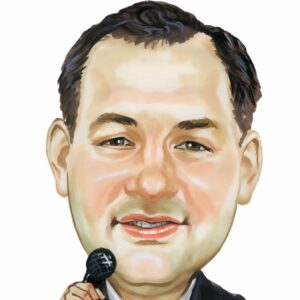Slogans: Creating and Using Them In Life, Career and Business

Slogans: Creating and Using Them In Life, Career and Business
By Catherine Franz
Information is coming at us from all directions nowadays. This pace requires us to demand that we receive it fast and predigested in order to inch ahead of the game. This also requires a new filing system method for storing the bites and bytes.
In this article, we will go into greater details on:
Why slogans are important in today’s society fast-pace information systems.
What is a slogan?
Learn the six major types of slogans.
The many uses for slogans.
Seven ways to make slogans memorable.
First, lets create a clear definition for a slogan. A slogan is a noun, usually repeated and persuasive that creates a memorable catch phrase, motto, or jingle, that expresses a particular aim or concept. A concept that you want to stick in your audience’s mind like glue to paper.
Second, what makes a slogan memorable? Brevity is first in line — normally 10 words or less. Rhythm is the only exception to brevity. Rhythm is easier to create if there is an association to the receiver’s past — like a particular jingle on TV during their teen years for those now in their 50s. I still hold one from a TV ad long ago, “Winston tastes good like a cigarette should.” And I never smoked.
An additional method is through repetition or language vividness. More on this later.
Third, what are the benefits for using slogans? Brevity, as mentioned earlier, meets the requirements of today’s fast pace. Slogans also influence decisions, persuade, and add credibility. Our brains are like filing cabinets. A slogan makes it easier to file and pull when needed. For NLPers, neuro-linguistic programming, slogans create anchors. When people repeat the slogan, then consider it filed.
There are five major slogan types:
A feature — a uniqueness or difference between a substance, product or object. Ex: “Write an ebook in 7 days.”
A benefit — a result that someone receives. Remember, this saves you [time or money].
A question — thought-provoking methods. “How would you like to be a millionaire in three years?”
A challenge — a dare. Ex: The Marines, “We are only looking for a few good men.”
A structure — a design or collection put together for a single purpose. Ex: “The Abundance Center holds all the information you will ever need to know on abundance.”
There are seven ways to make a slogan memorable:
Make it exciting
Be boastful or exaggerated
Self-referencing
Metaphorical, playful or humorous
Inspirational or uplifting
To trigger painful memories or possibilities
Use of vivid or freshful language
Okay, the basics are out of the way. Yet to come: How to use slogans in your personal life, career, and business. Including examples for re-enforcement.
Create Life Slogans
Life slogans help energize goals, dreams, and even change beliefs. One of my favorite slogans gets me jumping out of bed every morning (benefit, self-referencing): “Everyday begins as a clean new slate, I am free to choose what gets written there.” Is there a slogan that swirls around in your head in the morning? Share it with others — write a poem or create a story about it.
Playtime: Create a life slogan, two or three, that get you hopping. Try them out for a day or two. Measure their energy from 1-10 (10 being highest). Share and ask for feedback.
Do you have children? Create positive slogans that rhythm and trigger action. I don’t recommend negative slogans like, “Last one in, is a rotten egg.” Create positive slogans, “First one in, gets a hug (rhythm and action). This slogan is a little too cute, yet it makes my point.
Create Career Slogans
Do you belong to Toastmasters or give presentations? Use slogans for the title, then repeat it in your content along with its meaning, and as the last line. Watch how many mention its affects afterwards. Create a new one for each speech.
Create interview slogans. Ones that help them remember you. Know the company’s slogan. Create a slogan that builds on you’re your features and benefits of why they need to hire you. Use it during the interview. You can create one that can use one or two of the different types: self- referencing, metaphorical or inspirational.
Slogans are powerful enough that people, like comedians and actors, have developed entire careers around them. You don’t need to be famous to start. Slogans can even become book titles later on.
Business Slogans
In business, slogans are usable for self-introductions, prospective presentations, on web sites, in e-mail signatures, and even speaking engagements.
Example: You are a coach giving a presentation for a contract with a company for life coaching or business coaching. Create a slogan for a process or concept on what applications you will be using. Or give the process an acronym, like S.T.O.P. [something]. Let the acronym be the start of the slogan. Create one for your complimentary sessions. You can also create a slogan to share each week with your clients.
Be creative, use a slogan in each of your sales and marketing processes, change them frequently if you need to. Sold a contract a year ago with one slogan, create another, and sell them another contract this year.
Use slogans in article titles, ebooks or books. Sometimes a slogan takes off and becomes so memorable it becomes the brand for a company. Coke Cola with the slogan, “The real thing,” took themselves to first place in the marketplace with these three words. Everything afterwards just wasn’t the real thing.
Creating a Slogan
Where do you start to build slogan’s? Re-read any of your notes or material. Highlight phrases that contain high energy. Do you lead teleclasses, like I do? Ask participants at the end of each call for two or three words of what they are taking away. Whatever they provide was memorable for them. Hear it multiple times, those are sure slogans. This also applies to pilot programs you might give. Ask for feedback, they are usually built in slogans.
Ask, “What do I want people to remember about [me][my company]?” KISS it — keep it simple and short. That is possibly a slogan.
Next, ask, “What do I want them to do?” This is another type of slogan. Yellow pages had a great one for years, “Let your fingers do the walking.”
Another way to create a slogan is to take two phrases that have parallel construction and place them together with a comma. Ex: Prizefighter Ali, “Float like a butterfly, sting like a bee.”
Rhyme helps create memorable. Read poetry for triggers or language that influences or inspires.
Ask friends for help. Make it a game at a meal event. Ask clients too on feedback as to what makes you memorable to them. They always keep it short.
Be playful when creating slogans. Keep take of them too in your business journal or in a slogan file on your computer. Add and use them frequently. Encourage others to do the same. Success attracts success. Share it and it will, “Always attract back everything you need.”
We hope you found this article about “Slogans: Creating and Using Them In Life, Career and Business” helpful. If you have questions or need expert tax or family office advice that’s refreshingly objective (we never sell investments), please contact us or visit our Family office page or our website at www.GROCO.com. Unfortunately, we no longer give advice to other tax professionals gratis.
To receive our free newsletter, contact us here.
Subscribe our YouTube Channel for more updates.

Alan Olsen, is the Host of the American Dreams Show and the Managing Partner of GROCO.com. GROCO is a premier family office and tax advisory firm located in the San Francisco Bay area serving clients all over the world.
Alan L. Olsen, CPA, Wikipedia Bio

GROCO.com is a proud sponsor of The American Dreams Show.

The American Dreams show was the brainchild of Alan Olsen, CPA, MBA. It was originally created to fill a specific need; often inexperienced entrepreneurs lacked basic information about raising capital and how to successfully start a business.
Alan sincerely wanted to respond to the many requests from aspiring entrepreneurs asking for the information and introductions they needed. But he had to find a way to help in which his venture capital clients and friends would not mind.
The American Dreams show became the solution, first as a radio show and now with YouTube videos as well. Always respectful of interview guest’s time, he’s able to give access to individuals information and inspiration previously inaccessible to the first-time entrepreneurs who need it most.
They can listen to venture capitalists and successful business people explain first-hand, how they got to where they are, how to start a company, how to overcome challenges, how they see the future evolving, opportunities, work-life balance and so much more..
American Dreams discusses many topics from some of the world’s most successful individuals about their secrets to life’s success. Topics from guest have included:
Creating purpose in life / Building a foundation for their life / Solving problems / Finding fulfillment through philanthropy and service / Becoming self-reliant / Enhancing effective leadership / Balancing family and work…

MyPaths.com (Also sponsored by GROCO) provides free access to content and world-class entrepreneurs, influencers and thought leaders’ personal success stories. To help you find your path in life to true, sustainable success & happiness. It’s mission statement:
In an increasingly complex and difficult world, we hope to help you find your personal path in life and build a strong foundation by learning how others found success and happiness. True and sustainable success and happiness are different for each one of us but possible, often despite significant challenges.
Our mission at MyPaths.com is to provide resources and firsthand accounts of how others found their paths in life, so you can do the same.
Igniting Others With Kary Oberbrunner
Igniting Others With Kary Oberbrunner See Kary’s interview with Alan Olsen on Youtube: https://youtu.be/IfPrM7b9LII Do you struggle through life feeling lost? Do you want to find your dream job or perform better at your current day job? Are you looking for a new secret weapon for mastering life? Kary Oberbrunner is… a Wall Street Journal…
IRS inflation related adjustments to tax rates, Ron Cohen, Episode 31
Today we discuss:
-IRS inflation related adjustm…
Thanksgiving week and gratitude
Thanksgiving is one of my favorite times of the year because it helps me to remember the many things I have to be grateful for: my family, relatively good health, friends, job, religious freedoms (I should probably use more often), and too many other blessings to list. Not to mention the Thanksgiving meal, mashed potatoes,…




